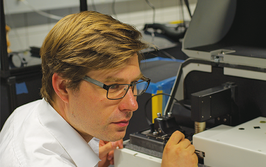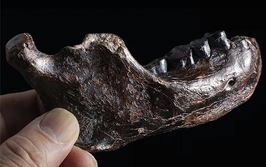Asbestos in old Floor plates in the focus of FTIR and EDX
contributed by Shimadzu |
Introduction
Asbestos a never ending story about mineral fibres which are banned because of generating cancer in human body. When is was found as flame retardant it was the best filler in diverse construction materials. Very often used from 1950ies to 1970ies. One example for indoor was the usage of it in linoleum. Inside of linoleum it was embedded into polymer and not a free fibre. As time goes by most of owners from buildings with floor plates doesn´t remember or are new owners and do not simply know about the content of such linoleum plates. As the reconstruction companies know about such plates they have to check the quality of such material before wasting it. The handling of asbestos fibres is under national controls and strongly regulated. Since 2003 (directive 2003/18 / EC), there has also been a ban on the use of asbestos or materials containing asbestos at European level. And since 2005 it is rule for all EU members. But before rules take effect the material must be identified.
Highly recommend is to use the FTIR for the identification of such substances, or the identification of fibres with stereo microscopy or composition via elemental distribution analysis. With this application will be shown what is possible without any chemical treatment. The both techniques FTIR-ATR and elemental analysis, with the EDX (Energy Dispersive X-ray), are the working tools for this. The Asbestos fibres here in this application note were embedded or fixed fibre. No free asbestos fibres, fibres in a matrix.
Log in or register to read this article in full and gain access to The Analytical Scientist’s entire content archive. It’s FREE!

















